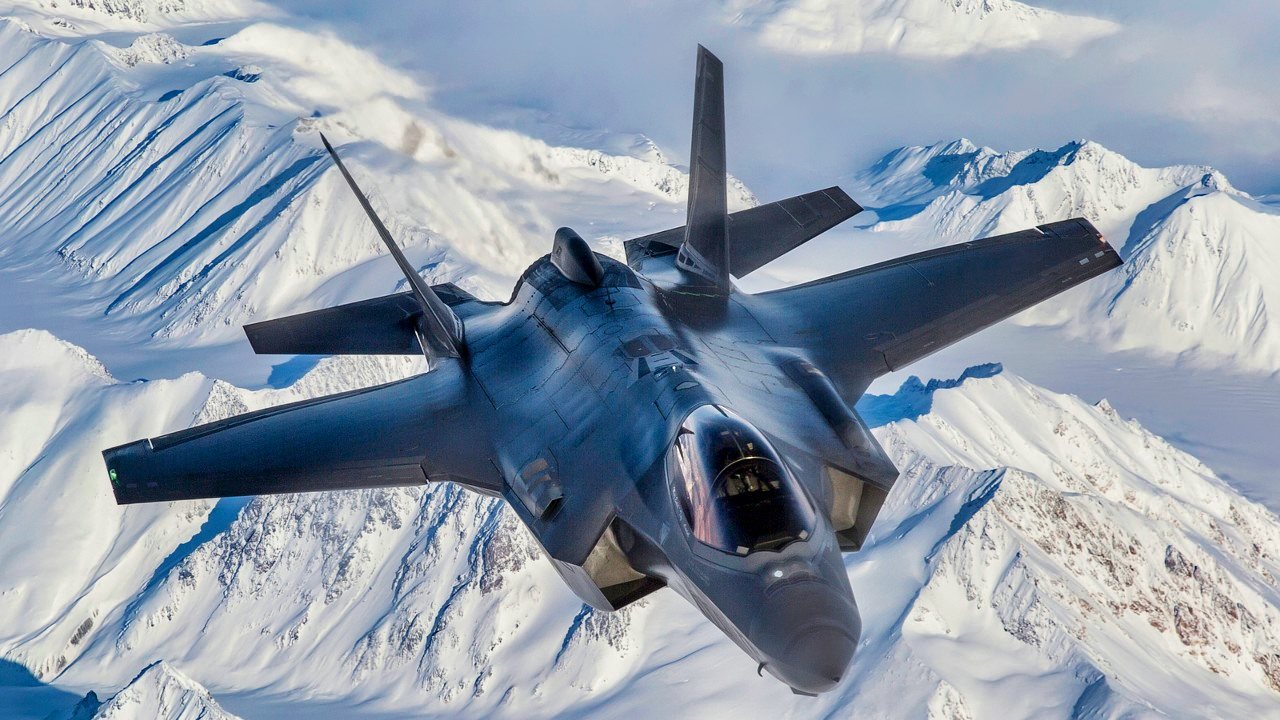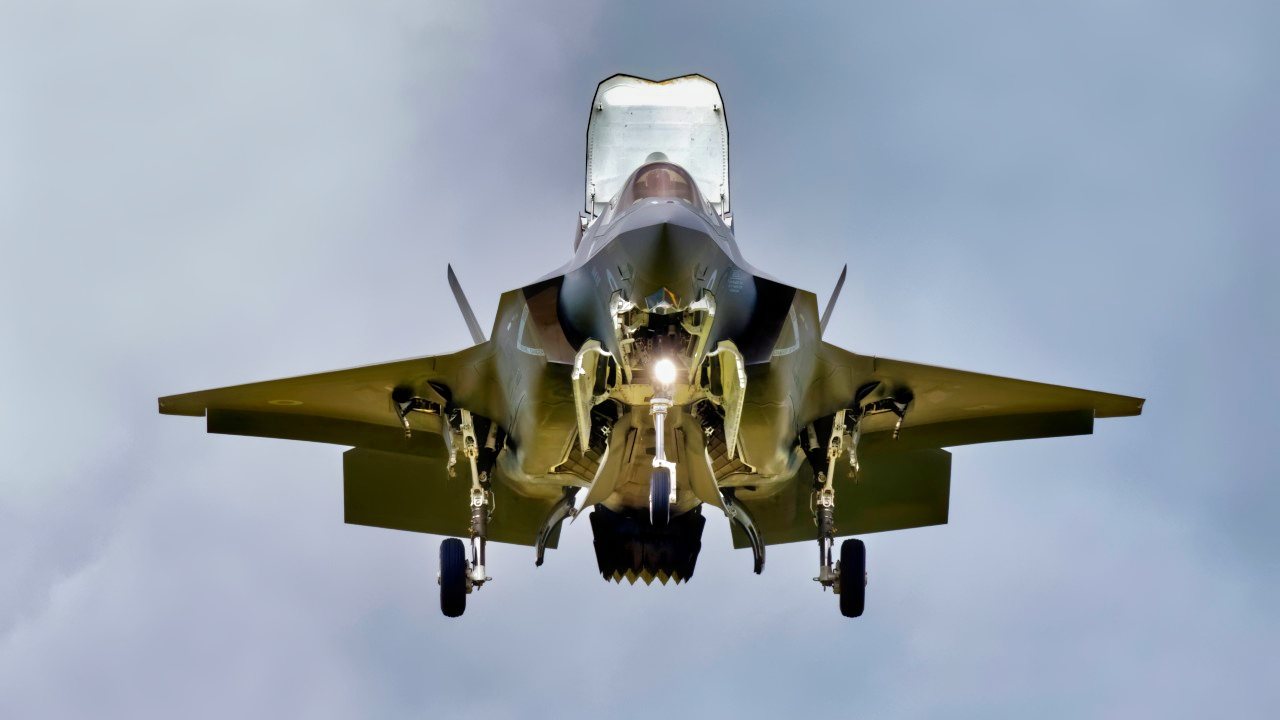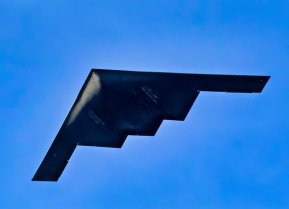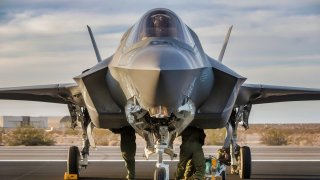F-35 Stealth Fighter Is Now Cleared for Full Rate Production
The U.S. Department of Defense has green-lit the F-35 fighter jet, produced by Lockheed Martin, for full rate production, a decision coming five years later than initially planned and two decades after the contract award.
Summary: The U.S. Department of Defense has green-lit the F-35 fighter jet, produced by Lockheed Martin, for full rate production, a decision coming five years later than initially planned and two decades after the contract award. This milestone is reached despite the U.S. Air Force's recent decision to cut back its F-35 purchases in 2025 to 42 aircraft. The approval was based on comprehensive evaluations, including operational and live fire tests, and regulatory compliance, marking a significant achievement for the program. Despite reaching this stage, the Pentagon has temporarily halted new F-35 deliveries pending upgrades under the Technology Refresh 3 (TR-3) initiative, which aims to enhance the jet's capabilities with improved hardware and software. Meanwhile, the F-35 has also been certified to carry the B61-12 nuclear bomb, emphasizing its dual-role capacity in conventional and nuclear warfare, and underlining its strategic importance to U.S. and NATO defense strategies. Over 990 F-35s have been delivered to date, highlighting its key role in modern military operations.
F-35 Fighter Jet Achieves Full Rate Production: What This Means for Modern Warfare
The U.S. Department of Defense has approved the F-35 for full rate production.
The announcement comes five years later than originally planned and 23 years after Lockheed Martin was awarded the contract for the multi-role fighter. It comes even as the U.S. Air Force announced it would scale back its acquisition of the fifth-generation Lockheed Martin F-35 Lightning II stealth fighter, with plans to buy just 42 of the aircraft in 2025.
"The F-35 achieved this milestone after considering the results from the F-35 Combined Initial Operational Test and Evaluation and Live Fire Test and Evaluation Report, System Development and Demonstration exit criteria, statutory/regulatory documentation compliance, future production strategy, and draft acquisition program baseline details,” the Department of Defense announced on Tuesday. “Proceeding to MSC/FRP requires control of the manufacturing process, acceptable performance and reliability, and the establishment of adequate sustainment and support systems.”
The Air Force has operated the F-35 since 2016, and the service plans for a fleet of 1,763 aircraft. Production was already close to capacity, but the official full-rate production designation will allow the Joint Program Office to negotiate multi-year contracts for the fighter.
"This is a major achievement for the F-35 Program," Under Secretary of Defense for Acquisition and Sustainment Dr. William A. LaPlante said in a statement.
"This decision backed by my colleagues in the Department highlights to the Services, F-35 Cooperative Program Partners, and Foreign Military Sales (FMS) customers that the F-35 is stable and agile, and that all statutory and regulatory requirements have been appropriately addressed," LaPlante added. "The F-35 Program is the premier system that drives interoperability with our allies and partners while contributing to the integrated deterrence component of our National Defense Strategy."
The F-35 program has delivered more than 990 aircraft to the U.S. military services, partner nations, and FMS customers.
The Nuclear-Capable Fighter Bomber
The F-35 has also attained operational certification to carry the B61-12 thermonuclear gravity bomb, marking it as the first fifth-generation aircraft with nuclear capabilities.

With that milestone achieved ahead of schedule, the F-35A becomes a pivotal component of the U.S. and NATO's extended deterrence commitments. The development highlights the aircraft's versatility as a dual-capable platform, able to deliver conventional and nuclear payloads. As NATO-operated jets receive initial certification for the deterrence mission, the integration of the B61-12 further solidifies the F-35A’s role in modern warfare.
U.S. Deliveries On Hold
Despite these milestones, the Pentagon has stopped accepting deliveries of newly built Lightning II aircraft until Technology Refresh 3 (TR-3) is ready. TR-3 includes a series of hardware and software improvements to the F-35 that include better displays, computer memory, and processing power.
Lockheed Martin finished building the first F-35s that were to have the TR-3 improvements in July 2023. But the software wasn't ready, meaning the Department of Defense couldn't conduct the check flights required to accept delivery.

Lockheed has stored about 70 completed F-35s until that testing concludes, which is expected to happen by mid-to-late summer.
Author Experience and Expertise: Peter Suciu
Peter Suciu is a Michigan-based writer. He has contributed to more than four dozen magazines, newspapers, and websites with over 3,200 published pieces over a twenty-year career in journalism. He regularly writes about military hardware, firearms history, cybersecurity, politics, and international affairs. Peter is also a Contributing Writer for Forbes and Clearance Jobs. You can follow him on Twitter: @PeterSuciu. You can email the author: [email protected].


